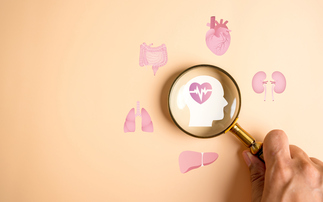Hannover Re's Kate Ramsay examines the effect on the insurance market of new recommendations for the safe alcohol limit.
You may have noticed the government proposed new alcohol guidelines in January (rather kindly waiting till the sherry and mince pie season had passed!)
These new recommendations suggest a maximum of 14 units per week for both men and women (reduced from 21 for men); advice to spread the units over the week rather than bingeing them in one session; and to have some alcohol-free days (1).
If nothing else, this helped those of us doing ‘Dry January' to feel more smug than usual!
These aim to replace the 1995 guidelines, which have been under review since 2013. The government's alcohol strategy set out proposals to ‘crack down on our binge drinking culture, cut alcohol-fuelled violence and disorder that blights too many of our communities, and slash the number of people drinking to damaging levels' (2).
Alcohol has been linked to increased risk of development of heart disease, stroke, accidental death and seven types of cancer: breast, mouth, throat, oesophageal, bowel, liver and laryngeal.
We have understood the link between a heavy alcohol intake and these diseases for some time.
However, researchers have found it harder to understand the link between a low alcohol intake and cancer: other factors need to be excluded such as diet (3).
"But there's a protective effect of alcohol. Red wine is good for the heart, isn't it?"
Unfortunately, there is conflicting evidence that this is the case, unless you happen to be a 55-year-old woman drinking about two glasses of wine a week.
The advice on regular drinking is founded on the evidence that if society drank the same or higher than the limits advised, any protective effect from alcohol on mortality would be overridden.
The risk of dying from an alcohol-related condition has been estimated to be about 1% over a lifetime.
This level of risk has been compared with risks from some other regular or routine activities, such as driving (4).
A question we've been asked a few times is: "What does this change mean for the insurance industry?"
I'm not talking about those boozy conferences we're rumoured to enjoy: I mean for the difficulty we sometimes have in assessing it at underwriting and claims stage. It's fair to say we have a bit of a love/hate relationship.
Our wet culture
The UK has what is termed as ‘a wet culture' (and that's not just the weather). So, the price set at quote stage using actuarial data should already account for alcohol patterns in the population to some degree.
Unfortunately, we're well aware of the hazard alcohol can play in accidental deaths, as well as contributing to some cancer claims. Alcohol can be one of the biggest causes of misrepresentation found at claims stage and we have been working to transform this.
A few years ago, a typical application form question to assess an applicant's alcohol intake would have looked something like this.
‘Do you drink less than 35 units of alcohol per week?' is a straightforward question. However, it could be criticised for being somewhat leading.
Units of alcohol may not be a measure that customers are fluent in either and can differ widely depending on the size of the measure and the ABV% of the drink.Application forms today generally ask for number and type of drinks per week.
More importantly, whether the applicant has been advised by a medical practitioner to reduce their alcohol consumption, or been referred to counselling or Alcoholics Anonymous.
Some companies ask about disqualification from driving. In the US, they link directly with MIB (Motor Insurance Bureau) to gather risk information from there. Even though questions at underwriting stage are more robust now, there may still be difficulty in obtaining an accurate disclosure.
There was a fascinating study last year that measured what people said (or thought) they drank, and compared it with alcohol sales.
According to the study: ‘The equivalent of more than three-quarters of a bottle of wine (or about three pints of beer) per drinker every week goes unaccounted for. Or, to put it another way, 12 million bottles of wine a year.' (5).
This highlights the difficulty that a customer may have in calculating their alcohol intake, and a claims assessor in believing it.
Screening for alcohol is not commonplace in our market. It's hard to accurately measure the impact of alcohol by means of a blood test. (A breathalyser is of course helpful only in acute situations).
Medicine's port of call would be liver function tests: generally we will be looking for a raised gamma-glutamyl transpeptidase (GGT) or AST/ALT (transaminase) levels.
PTO










